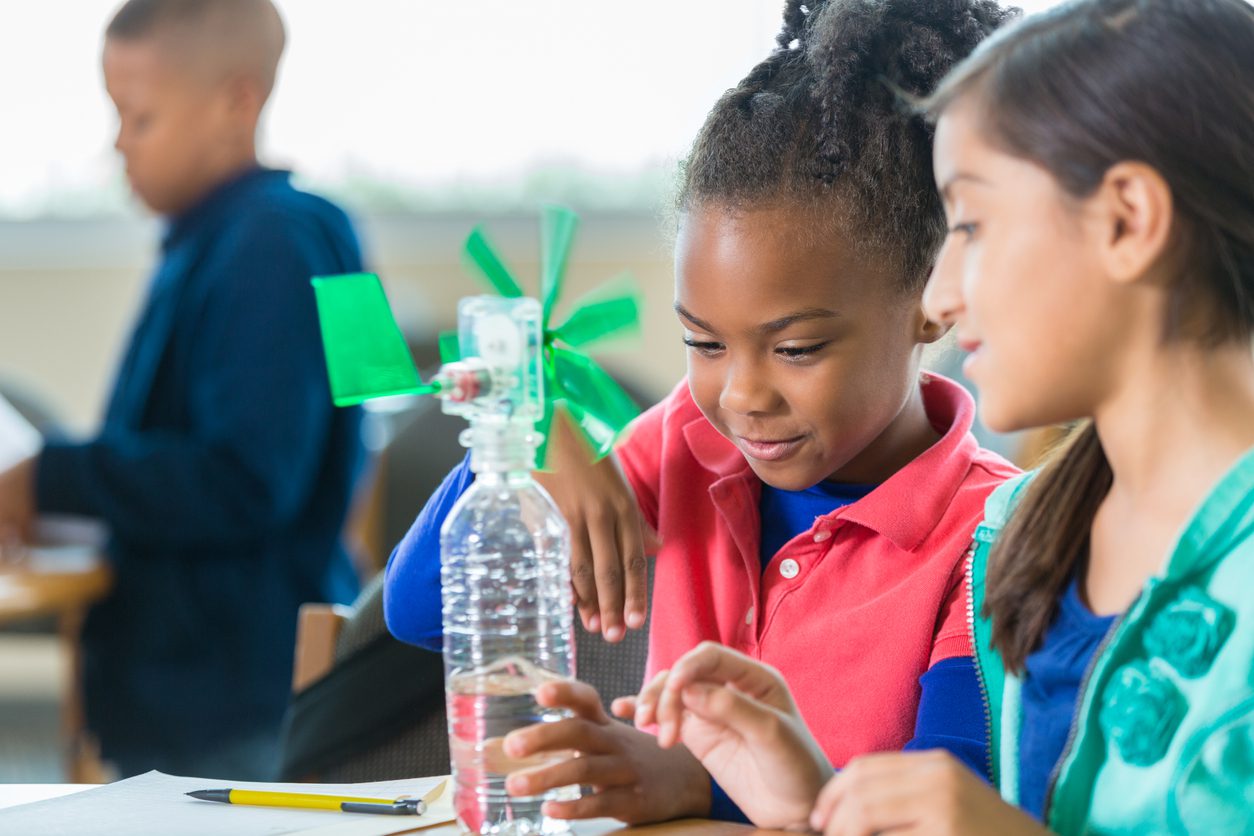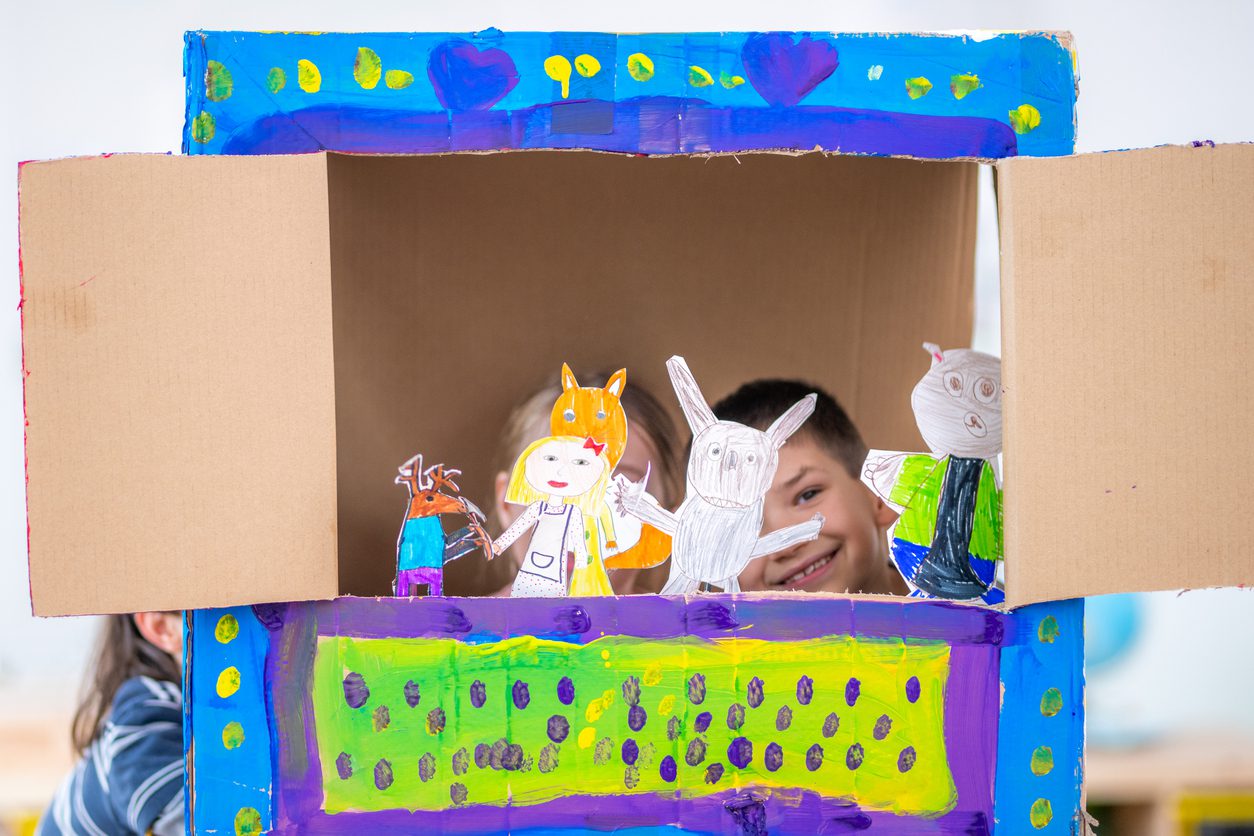Did you know that the majority of Nobel prize winners in the science fields practice some kind of art in their free time? In order to thrive in the modern world, students need to blend and integrate multiple different educational disciplines. Engineers need to think creatively to solve problems. Bakers use precise mathematical measurements and their artistic vision to create beautiful pastries. Over the past couple of years, STEM (science, technology, engineering and mathematics) has been the primary educational methodology for integration of subjects. And STEAM is the addition of art to the STEM framework. Through STEAM education, students develop the best possible toolkit of skills to prepare them for success in the future.
In this blog we will discuss strategies to integrate art in STEM activities and explore the benefits of arts education. Want to implement STEAM lessons in your classroom? Read to the end for linked PopEd lessons with STEAM components.
Making the Case for Creativity, One Cardboard Box at a Time
One of my favorite children’s books is Not a Box by Antoinette Portis. It’s about a rabbit who through imagination transforms a cardboard box into a racecar, a robot…the list goes on. Anyone who has spent time around young children has witnessed the marvelous ingenuity that children employ in their approach to everyday mundane objects. For a 4-year-old, a cardboard box is not just a box but a whole world of possibilities.
Teachers building STEAM lessons should embrace this mindset. Any material is fair game for a lesson. When building a lesson, start with a “spark.” What will spark your students to engage in inquiry? Early childhood educators should spend time observing their students during free play, especially outdoors. Students at this age are eager to experiment with familiar materials and unafraid to use them in unconventional ways.
For older students, the spark can be something else. Take a closer look at your content area and investigate the potential for arts connections. Social studies teachers can look to the artistic and cultural movements of the time periods that students are studying and use this as a hook to discuss greater historical events. Bring history to life through student acting. Science teachers can challenge students to visually describe scientific processes through art. Geometric forms and patterns are already a part of math class – math teachers can foster this connection through artistic expression. Even music has fractions and patterns!
 STEM to STEAM: What Does it Means to Integrate Art with STEM?
STEM to STEAM: What Does it Means to Integrate Art with STEM?
What does it mean to add arts education to a STEM approach? The best practices do not mean using art as an add-on, but through intentional teaching of art skills. It is creating an authentic context where students use a creative process that connects an art form with other subject areas.
The San Diego Unified School District took on the challenge of creating a STEAM curriculum for its third to fifth grade students. They offered the following advice to incorporate arts in your lessons: think about the strengths of each art form and how they can contribute to student learning. Movement and dance are fabulous when it comes to model concepts that are hard for students to visualize. For example, fourth graders modeled the physical science concepts of force and energy through dance. Theater can be used to develop language and public speaking skills. Visual arts are great to explain and demonstrate content knowledge. Through these art forms, students are showing what they know about a content area.
Additionally, teachers can build a project based on the interests of their students. Student-centered projects with real world connections are the best pillars to frame your STEAM lessons. Sarah Park, 9th grade student and winner of the 3M Young Scientist Challenge offers great advice to teachers – encourage student questioning even if they are asking about a subject you do not teach! Sarah is passionate about music and math and both of these classes informed her research when creating her award-winning projects. Secondly, teachers should empower student ideas. Sometimes students feel like their ideas aren’t “big” enough, or “important” enough and then don’t continue their questioning. Students need validation and to feel heard when coming up with ideas. Lastly, encourage students to work with peers throughout the STEAM process of inquiry. Through shared interests and passions, students will benefit socially and intellectually.
Teachers themselves are great resources. Does your school already have an arts education program? Have a chat with the arts and music specialists and discuss the possibility of collaborating. As mentioned earlier, true arts integration includes quality education about art techniques and practices. Arts and music specialists will be your best resource if you are a general education teacher who wants to implement a STEAM framework. Lastly, STEAM projects are a great place to call on the expertise of people outside the classroom. A great place to start is with your local museum or cultural institutions. Museum educators often have wonderful resources and lesson plans available to teachers. If you can’t bring your students in person for a visit, many materials are available virtually. For example, the Kennedy Center in DC has an ample collection of resources that facilitate arts integration in the classroom.
Why Study Art? The Neuroscience of Arts Education
Studies have shown that the arts can strengthen the brain’s attention system and increase capacities for attention, memory and learning in general. Research from cognitive psychologists and neuroscientists has outlined the tremendous benefits of an arts integrative curricula (STEAM) in schools. Arts education increases students’ abilities to retain and recall information, creates new patterns of thinking, induces plasticity and results in stronger, higher-order thinking skills related to creativity. There is a pervasive myth that creativity is something innate, a gift to the rare brilliant mind, not something that can be practiced and developed. Creativity can be learned and strengthened through effective teaching, where students have to apply content knowledge in creative ways. STEAM has powerful impacts on students. Let’s be educational changemakers and inspire our students to think outside of the box.
PopEd’s STEAM Lessons
Want to implement a STEAM activity in your classroom today? Check out the lessons and resources below.
From Island to Island (Elementary) – Through acting out a short story students discover the concept of carrying capacity.
Millions and Billions (Elementary) – Students envision the concept of millions and billions through visual art and math problems.
World of 7 Billion Video Contest (Middle and High School) – Students create a 60 second video relating population growth to one of three global challenges.
The Global Goals (High School) – Students create a visual to communicate the idea of one of the UN’s Sustainable Development Goals (SDGs)
Image credits: Puppet show (ID 1172490582 / HappyKids / istockphoto.com); Windmill (ID 505018812 / SDI Productions / istockphoto.com)



